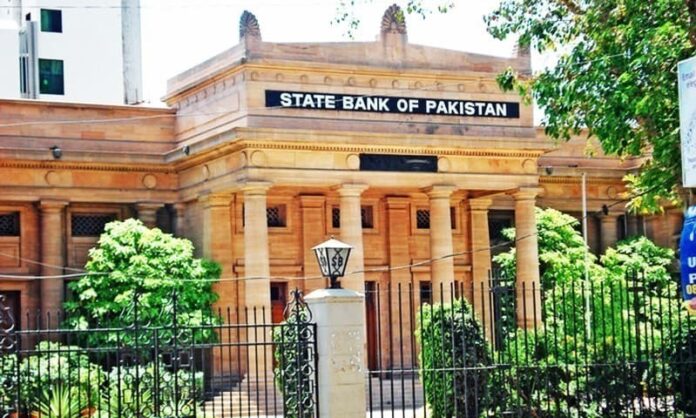The State Bank of Pakistan’s (SBP) Monetary Policy Committee (MPC) has agreed to keep the policy rate unchanged at 7%, as the Committee believes that the current monetary policy stance is sufficient to support the emerging recovery while protecting inflation expectations and financial stability.
A MPC meeting was held at SBP headquarters in Karachi, Governor of the State Bank of Pakistan (SBP) on Monday. Dr. Reza Baqir declared the decision of MPC at a press conference.
Governor SBP noted that the committee had taken into account key developments and prospects in the actual, external and fiscal sectors, as well as the resulting outlook for monetary conditions and inflation, and finally decided to preserve the status quo. At the same time, however, the inflation outlook has risen marginally, largely due to recent supply-side food price shocks.
The SBP Governor said that the economy was steadily improving before the Covid-19 pandemic and most of the economic indicators were moving in the right direction. The current pandemic, however, has affected economic development badly, as it has in other nations.
He said, however, that Pakistan’s economy has handled the Covid-19 crisis very well, backed by timely steps taken by the SBP. “The economic outlook now depends on the Covid-19 and the world economy. If the Covid-19 cases decline and global economies improve, the economy of Pakistan will also increase significantly,” he added.
The committee was told that the large-scale manufacturing (LSM) index returned to expansion in July, rising at 5% (YoY) after a deep contraction between March and June.
High-frequency demand indicators also represent an encouraging pick-up in economic activity, including car sales, cement shipments, POL sales, and electricity consumption. Nevertheless, across industries, the economic recovery remains uneven, with the hospitality and certain services sectors particularly lagging behind, and the level of operation still remains broadly below pre-Corona levels.
Growth in FY21, after dropping to -0.4% last year, is expected to rebound to slightly above 2%. The recovery is expected to be guided primarily by manufacturing and construction-related operations, which are sponsored by SBP’s various financial policies, including the Temporary Economic Refinancing Facility and the government’s housing and construction incentives.
Governor SBP noted that the external sector has remained resilient since the Coronavirus outbreak despite a challenging climate. As seen in the orderly two-way movement of the currency, the flexible market-determined exchange rate, adopted in May 2019, has played its precious role as a shock absorber.
The fiscal deficit for FY20 ended lower than in FY19, amid extreme coronavirus pressures and contrary to forecasts, and the growth in public debt was contained at around 1 % of GDP. This largely reflects the government’s strong measures to ensure a primary surplus in the first nine months of FY20, which helped provide fiscal space to respond to the outbreak of Coronavirus.
Tax receipts returned to positive growth during the first two months of FY21, in line with the steady pick-up in economic activity, averaging about 1.2 percent (YoY). This improvement in tax collections, though well below pre-pandemic growth rates, represents a promising turnaround from the double-digit reduction observed during the last quarter of FY20.
During July-August 2020, Federal PSDP-related outlays nearly doubled compared to the same time last year. Overall, in line with this year’s budget, the MPC hopes that, as economic activity recovers in the coming quarters, the pre-pandemic course of fiscal consolidation will resume.



